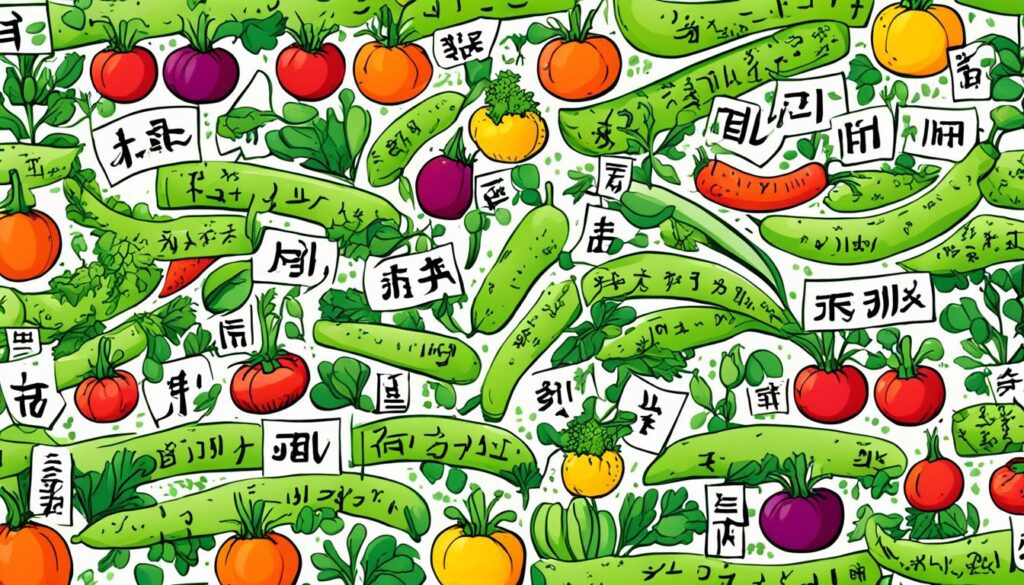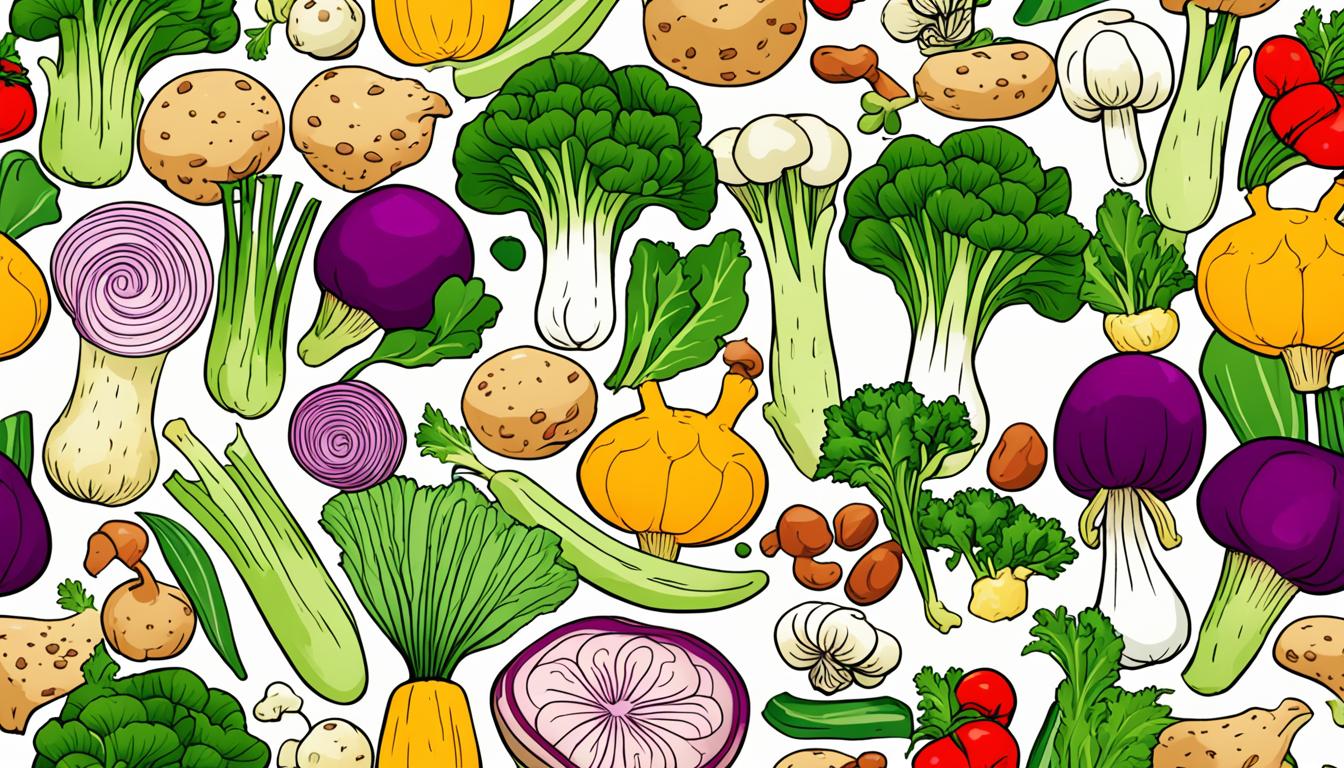In Japanese, the word for vegetables is “野菜” (yasai). It is pronounced as “ya-sigh.” Knowing how to say vegetables in Japanese can be useful when traveling or studying the language. Here are some common phrases and words related to vegetables in Japanese.
Essential Words and Phrases
When it comes to learning the vocabulary for vegetables in Japanese, there are a few essential words and phrases that you should know. These will not only help you communicate your preferences and dietary requirements but also enable you to navigate menus and markets more effectively during your travels. Here are some key terms:
| Word/Phrase | Pronunciation | English Translation |
|---|---|---|
| 野菜 (yasai) | ya-sigh | Vegetables |
| キャベツ (kyabetsu) | kyah-bets | Cabbage |
| トマト (tomato) | toh-mah-toh | Tomato |
| にんじん (ninjin) | neen-jeen | Carrot |
| ピーマン (pi-man) | pee-mahn | Green Pepper |
Remember, pronunciation is key to effectively using these words in conversation. Practice saying them out loud to improve your language skills. Conversations about food and ingredients will become much easier once you have mastered these essential words and phrases.
Conversational Phrases
Learning useful conversational phrases related to vegetables in Japanese can help you navigate food-related situations and engage in meaningful conversations. Here are some phrases to add to your vocabulary:
| English | Japanese Pronunciation | Japanese Translation |
|---|---|---|
| Do you have any vegetables? | Yasai wa arimasu ka? | 野菜はありますか? |
| I love eating vegetables. | Watashi wa yasai o tabemasu. | 私は野菜を食べます。 |
| What’s your favorite vegetable? | Anata no sukina yasai wa nan desu ka? | あなたの好きな野菜は何ですか? |
| Could you recommend a vegetable dish? | Yasai no ryouri o osusume shite kudasai. | 野菜の料理をおすすめしてください。 |
| I would like to order a side of vegetables. | Yasai no tsukemono o ichimai onegaishimasu. | 野菜の漬物を1枚お願いします。 |
Use these phrases to express your preferences, ask for recommendations, or order vegetable dishes when dining in Japan. Remember to practice their pronunciation to ensure clear communication.
Vegetable Names

When it comes to vegetables in Japanese, there are several common names you should know:
| English | Japanese |
|---|---|
| Cabbage | キャベツ (kyabetsu) |
| Carrot | にんじん (ninjin) |
| Cucumber | きゅうり (kyuuri) |
| Eggplant | なす (nasu) |
| Lettuce | レタス (retasu) |
| Onion | たまねぎ (tamanegi) |
| Radish | 大根 (daikon) |
| Spinach | ほうれんそう (hourensou) |
| Tomato | トマト (tomato) |
These are just a few examples, but there are many more vegetables with unique names in Japanese. Learning these words will not only help you navigate menus and grocery stores while in Japan but also give you a deeper appreciation of the country’s culinary culture.
Writing Vegetables in Japanese
If you’re interested in writing the word “vegetables” in Japanese, there are a few different ways to do so. The most common and formal way is to use the kanji characters 野菜. However, if you prefer using hiragana, you can write it as やさい.
Here’s a table showcasing the different forms:
| Kanji | Hiragana |
|---|---|
| 野菜 | やさい |
If you want to write specific vegetable names, it’s important to know the corresponding kanji or use katakana for foreign words. Here’s an example:
| English | Kanji | Hiragana | Katakana |
|---|---|---|---|
| Cabbage | キャベツ | きゃべつ | キャベツ |
| Carrot | にんじん | にんじん | ニンジン |
| Tomato | トマト | とまと | トマト |
Remember, learning how to write vegetables in Japanese can be a useful skill when studying the language or traveling to Japan. Practice writing and pronouncing these words to enhance your Japanese proficiency.
Cultural Considerations
In Japanese cuisine, vegetables play an important role. Traditional Japanese meals often include a variety of vegetables, showcasing the freshness and seasonality of the produce. Vegetables are typically prepared in different ways, such as being lightly steamed, stir-fried, or pickled. It’s also common to find vegetable-centric dishes like vegetable tempura or sushi rolls with vegetable fillings.
Regional Variations
Just like in any cuisine, there are regional variations in vegetable names and usage in Japan. Different regions may have their own names for specific vegetables or unique ways of preparing them. Exploring regional cuisines can be a great way to discover new vegetable dishes and expand your Japanese vocabulary.
| Region | Vegetable Name | Preparation Method |
|---|---|---|
| Kyushu | サトイモ (Satoimo) | Simmered or roasted |
| Osaka | ミズナ (Mizuna) | Used in salads or stir-fries |
| Hokkaido | サツマイモ (Satsumaimo) | Baked or mashed |
| Okinawa | ゴーヤ (Goya) | Bitter melon used in stir-fries or soups |
Conclusion
Learning how to say and understand vegetables in Japanese can greatly enhance your language skills and cultural knowledge. By familiarizing yourself with the Japanese names for vegetables, you can navigate food-related situations with ease and impress others with your language proficiency.
Practice pronouncing the words – such as “野菜” (yasai) – and delve into the rich variety of vegetable-based dishes in Japanese cuisine. From traditional meals featuring lightly steamed or stir-fried vegetables to flavorful pickled offerings, Japanese cuisine offers a wealth of options to explore.
As you continue your language journey, remember that regional variations may exist for both vegetable names and their preparation. So, don’t be afraid to delve into different regional cuisines within Japan, allowing yourself to discover new vegetable dishes and expand your Japanese vocabulary even further.
So, embrace the world of Japanese vegetables, immerse yourself in the language, and enjoy the culinary delights it has to offer. Happy learning!

